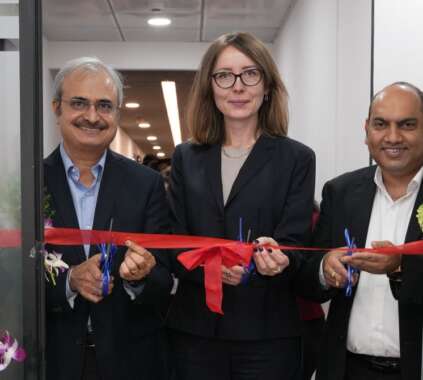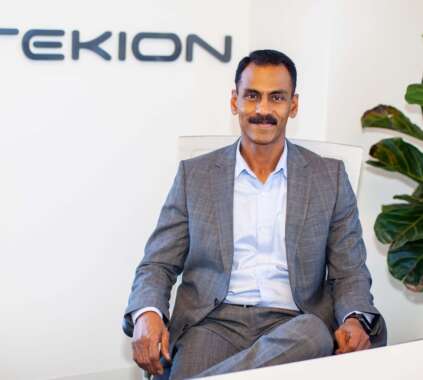Cloud repatriation or cloud exit are terms that we heard quite often in 2023 and will likely continue to command our attention in 2024. Is the cloud-first mantra, which was once widely touted as the future of all business operations, losing its luster?
Thanks to several factors, CIOs are relooking at their public cloud strategies. While enterprises have greatly reaped the benefits of public cloud over the years, they are beginning to reassess their cloud-first or cloud-only strategies, opting instead to migrate certain workloads back to on-premise environments. Cost remains a key factor for this cloud repatriation.
A 2023 HashiCorp State of Cloud Strategy Survey reveals that almost all enterprises (94%) report “avoidable cloud spend” or what is known as ‘cloud waste’.
“Cloud was at one point the biggest buzz, which took a long time to gain traction. Then it moved to a matured level of usage – a point after which many users realized that the costs were going immensely high. Strangely, accordingly to any law of technology, the cost should always come down as usage increases. Cloud has been the only exception to this rule,” says Sunil Mehta, CIO & Partner, BDO – a global professional services firm.
This, he adds, has led to ‘mixed feelings in the CIO community and the tech community at large’ about the future of public cloud as a platform of choice. He was talking on the sidelines of Tech Saga 2024, one of the biggest gatherings of Tech visionaries, hosted by CIO Klub Pune chapter.
“Strangely, accordingly to any law of technology, the cost should always come down as usage increases. Cloud has been the only exception to this rule,” says Sunil Mehta, CIO & Partner, BDO.
But is the public cloud aura really disappearing? Or is it the inherent evolutionary curve that every technology will go through?
Tech leaders emphasize that some key benefits of public cloud continue to be appealing and there are still quite a few takers for public cloud. Ashok Mandlik, SGM – IT, Deepak Fertilisers, vouches for the flexibility, scalability, agility, and the ease of innovation that comes with public cloud.
“Most of the IT solutions today are available only on cloud platforms. Traditionally on-premise applications like ERP are also now moving to cloud. There is very little opportunity left to maintain these systems on-premise. That leaves organizations with no choice. Besides, an on-premise model is often not able to match the flexibility and agility that the cloud technology provides. The innovations that are rolled out by cloud players often compensate the downsides.”
Nevertheless, CIOs are increasingly going in for a workload-based approach as opposed to a platform-centric approach. They assert that certain workloads and applications are just not meant for the public cloud.
“What we have typically seen is that CIOs want to put everything on the cloud without realizing what really needs to go there. That resulted in a lot of static data sitting on the cloud, which contributed significantly to the cloud cost upsurge. This trend was accelerated during COVID,” adds Mehta.
“If the organization has clarity on the compute and storage parameters, the cost component can very well be controlled,” reiterates Mandlik. For many organizations, especially if they are not the very large enterprises, cloud is in fact ideal for balancing cost, performance, and security.
“Traditionally on-premise applications like ERP are also now moving to cloud. There is very little opportunity left to maintain these systems on-premise. That leaves organizations with no choice,” says Ashok Mandlik, SGM – IT, Deepak Fertilisers.
According to Mandlik, security is still a strong reason for many firms to go in favour of public cloud. “For an on-premise model, enterprises will have to continue to invest on a wide-range of tools for risk mitigation and it’s an ever-evolving scenario. That is perhaps why security remains one of the strongest reasons for enterprises to go for public cloud. Add to that the need for backup & disaster recovery, and the availability of skilled manpower to manage the data Center, and many CIOs realize that cloud TCOs are in fact comparable with that of on-premise models,” he underscores.
CIOs might often feel that they are walking on eggshells. They are falling back on the many learnings they have had over the years in finding the right fit. Hybrid and private clouds will see more adoption going forward as enterprises strive to control cost and maximize performance. Many ‘public-cloud only’ strategies are widely being shaken and revisited.
“Hybrid cloud will certainly dominate. We will also see increased adoption of private cloud that provides the experience and security of a public cloud with better manageability and optimized cost,” believes Mehta.
On-premise data centers still have very strong use cases in the manufacturing sector, Mandlik adds. Especially in process-heavy manufacturing establishments, the huge volumes of time-series data generated by OT systems still reside on-premise. But manufacturers leverage the cloud to analyze these data sets to derive business insights.
With more and more expensive AI workloads in the horizon, how are enterprises relooking at their cloud priorities?
Enterprises’ cloud strategies are sure to get more nuanced – they are exploring a combination of public cloud, private cloud, industry cloud and co-location services, as they try to reassess each workload and place them in the right infrastructure. Cloud repatriation might be an obvious fallout of this reassessment.
For the major hyperscalers who have long dominated the market, this is a decisive moment in their growth journey. Even though the pay-as-you-go model of the cloud is beneficial for fluctuating workloads, it can result in unexpected expenses when usage suddenly spikes.
“There seems to be an increased interest towards Indian datacenter hosting companies and they could give the big hyperscalers a run for their money. Because cost is going to be a big differentiator in the cloud game,” states Mehta.
Mandlik feels that the change is already happening. “Cloud providers now have become mindful of the fact that CIOs are increasingly conscious about cloud spending. Their dynamic pricing models (pay per use), simplified management mechanisms with flexible dashboards allow organizations to utilize the workloads and cloud services more meticulously,” he says.
Above all, CIOs are relooking at their cloud strategies which they derived a few years ago. In today’s fast-paced world, one cannot expect a tech strategy to work for five years. Cloud is a perfect example of why our tech roadmaps should be versatile, according to Mehta.
“With cost becoming prohibitive, tech leaders must now go back to the drawing board and understand what needs to sit on cloud and what shouldn’t—and this must be done a lot more frequently now than before. Because the role of CIO is not about doing what everybody else is doing. We need to be a strategic leader than a blind follower,” he sums up.













